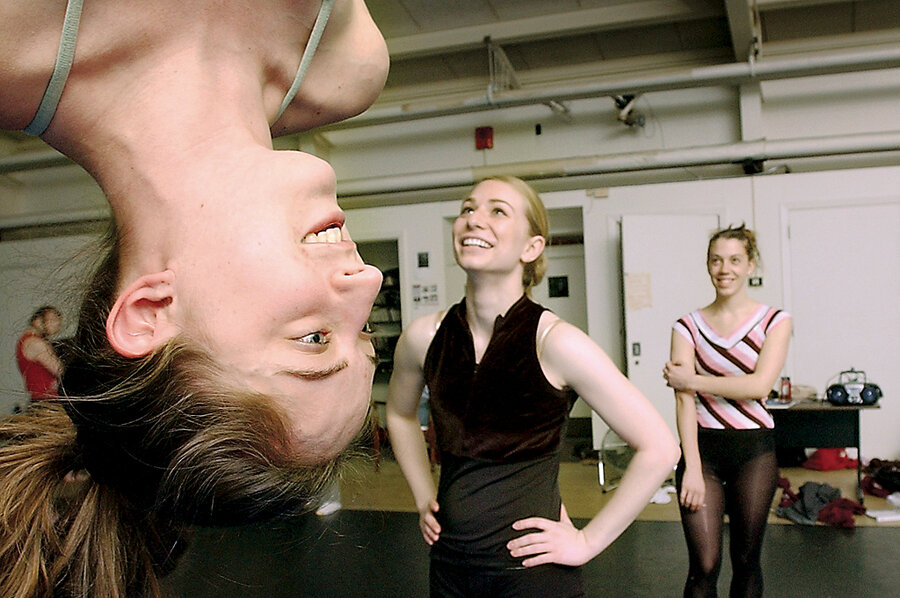Fitness takes a skyward leap
Loading...
First there was yoga, Pilates, and CrossFit. And now ... aerial fitness. Studios across the United States are incorporating aerial silks, ropes, hoops, and hammocks – hanging anywhere from a few inches to a few feet above the mat – to help make the ordinary routine of working out take flight in new forms of strength and expression.
Many involved with aerial fitness and circus performance point to Cirque du Soleil – that spectacle of performers displaying superhuman strength – as the primary push behind the latest trend in body sculpting for the masses.
No longer are aerial feats found only in the realm of circus performers flying on a trapeze. The art form is being adopted by modern dancers, Broadway performers, yoga aficionados, and even in higher ed classes (like the one pictured at the University of New Hampshire).
The appeal is hardly unexpected. Since its beginning in 1984 in Canada, Cirque du Soleil has stirred the skyward imaginations of more than 100 million spectators across 40 countries. It has spawned spinoff shows such as the equestrian-themed Cavalia, and an army of independent aerialists who can be hired to wow minglers at anything from parties and corporate events to concerts and art openings. In 2010, Pink captivated audiences at the Emmy Awards by singing “Glitter in the Air” while suspended from a silk hammock as a trio of aerial performers twirled above her.
When Amber Monson watched aerialists performing at a party 10 years ago she was transfixed. Having trained in ballet and dabbled in rock climbing after college, she saw the aerial feats as “an amazing combination of dance and flight.” Ms. Monson began pursuing aerial arts as a hobby, eventually started performing solo at events, and finally quit her job to open her own studio to train others.
The Sky Gym in Atlanta now teaches about 30 classes a week to roughly 400 students every month ranging in age from 5 to 50. Aside from circus performance and therapy schools, Sky Gym is one of the largest aerial schools in the US focused on fitness, but many smaller studios are springing up coast to coast promoting the fusion of aerial yoga, dance, and strength training.
“Different people are looking for a fun way to build strength,” says Monson. “Some are looking to do performances and see it as their creative expression, and some just want to feel like a kid again and go flying around the equipment like Tarzan.”








